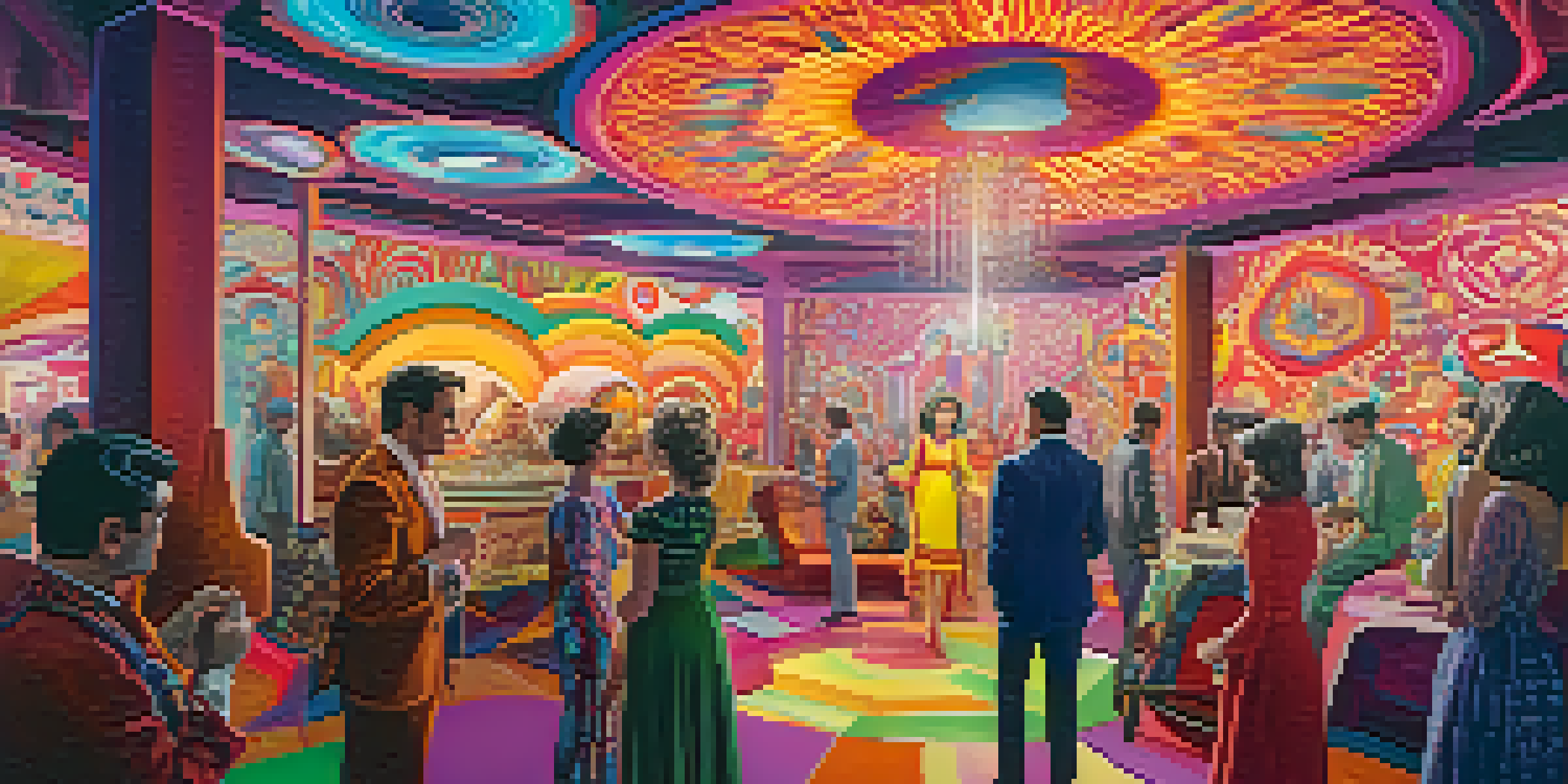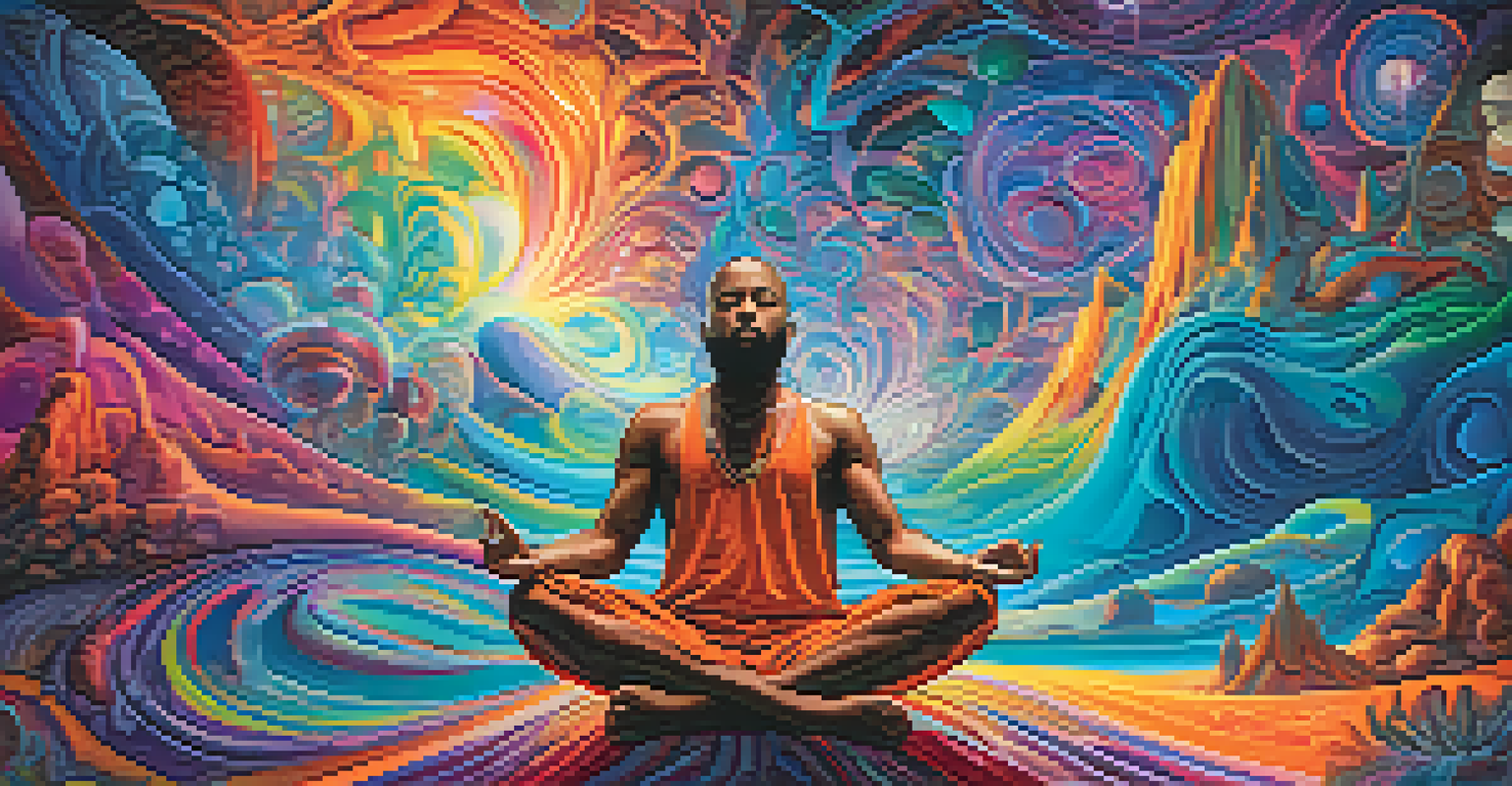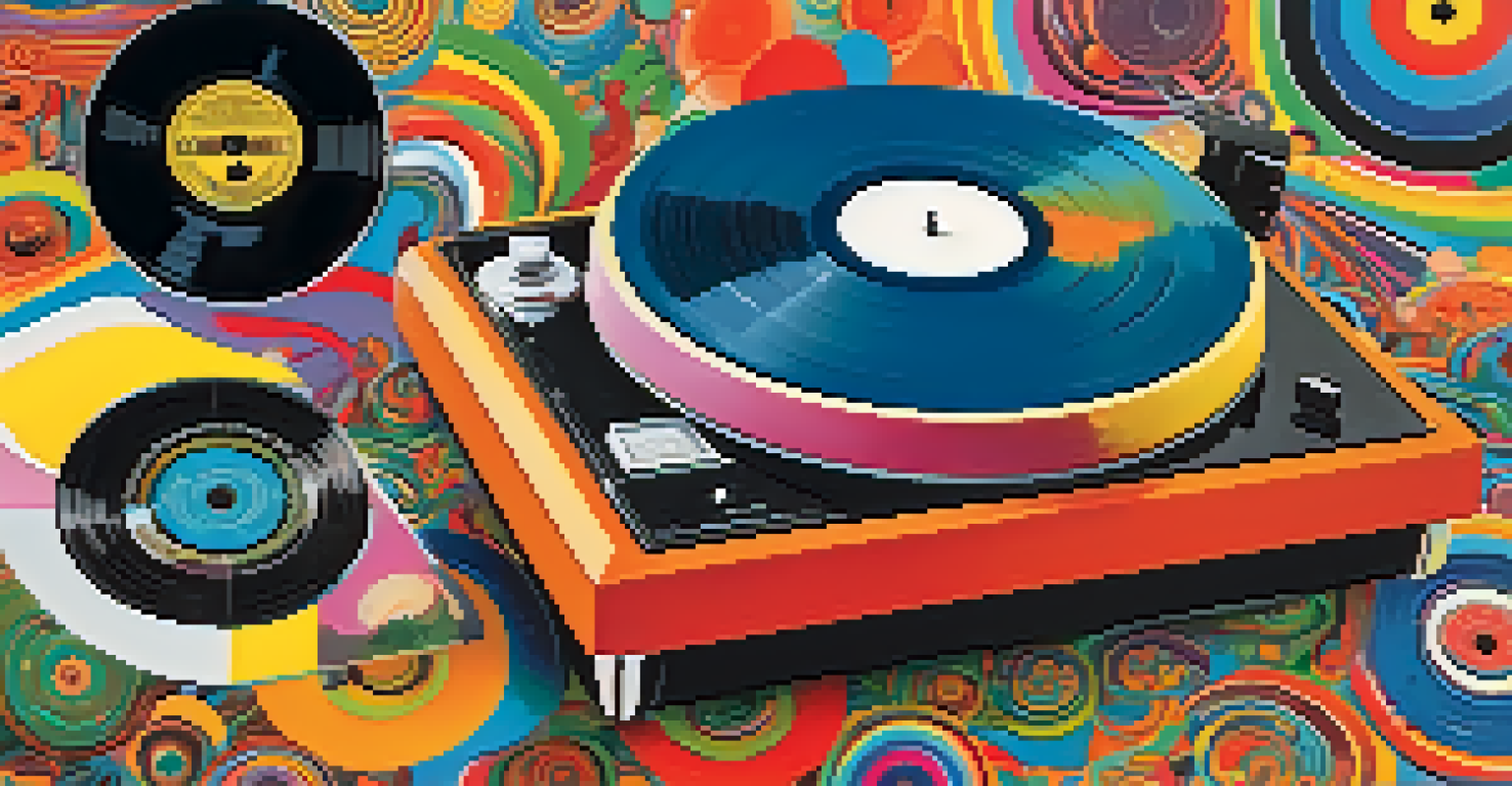The Role of Psychedelics in 1960s Counterculture Cinema

The Cultural Landscape of the 1960s
The 1960s was a transformative decade marked by social upheaval and a quest for identity. Movements for civil rights, women's liberation, and anti-war protests defined the era. Amidst this backdrop, a new wave of cinema emerged, reflecting the hopes and challenges of a generation. This cultural revolution set the stage for exploring unconventional themes, including the use of psychedelics.
Psychedelics are a way to explore the inner landscape of your mind.
Psychedelics, particularly LSD, gained popularity as individuals sought deeper consciousness and alternative experiences. Many viewed these substances as keys to unlocking the mind's potential, which resonated with the counterculture's ethos. As a result, filmmakers began experimenting with narratives that embraced these altered states of perception, leading to a unique genre of cinema.
This exploration of psychedelics in film wasn't just about drugs; it was about redefining reality and challenging societal norms. Movies of this era became mirrors of the collective consciousness, reflecting both the euphoria and the chaos of a generation seeking change. The interplay between psychedelics and cinema became a fascinating dialogue that influenced storytelling and visual aesthetics.
Key Films of the Psychedelic Era
Several films from the 1960s stand out for their psychedelic themes and visuals, serving as cultural touchstones. One of the most iconic is 'Easy Rider' (1969), which showcases a journey across America that embodies the spirit of freedom and rebellion. With its experimental editing and vibrant visuals, the film captured the essence of the counterculture movement and its relationship with psychedelics.

Another significant film is 'The Trip' (1967), directed by Roger Corman. This film follows a man who takes LSD and experiences a surreal journey through his mind. It provided audiences with a visceral representation of the psychedelic experience, complete with bold colors and abstract imagery that challenged conventional storytelling.
Psychedelics Shaped 1960s Cinema
The exploration of psychedelics in film reflected the cultural upheaval of the 1960s, challenging societal norms and redefining reality.
Furthermore, '2001: A Space Odyssey' (1968) by Stanley Kubrick is often hailed as a groundbreaking work that reflects the psychedelic experience on a grand scale. Through its stunning visuals and enigmatic narrative, the film invites viewers to ponder existence, consciousness, and the universe. These films, among others, not only entertained but also sparked conversations about the nature of reality and the human experience.
Psychedelics and Visual Aesthetics
The visual style of 1960s counterculture cinema was heavily influenced by psychedelics, leading to groundbreaking artistic expressions. Filmmakers experimented with vibrant colors, surreal imagery, and innovative editing techniques to evoke altered states of consciousness. This visual experimentation created a new language in film, one that spoke to the emotions and experiences of a generation.
The cinema is a way of thinking about the world, not just a way of seeing it.
Techniques such as kaleidoscopic visuals, rapid cuts, and dream-like sequences became synonymous with psychedelic films. These elements were not only eye-catching but also served to immerse audiences in the characters' experiences. For instance, the use of slow motion and vivid colors in 'The Trip' contributed to the portrayal of an LSD experience, enhancing the emotional impact of the narrative.
As these films pushed the boundaries of visual storytelling, they also influenced a broader cultural aesthetic. The psychedelic art movement, characterized by swirling patterns and bright colors, found its way into album covers, fashion, and graphic design, creating a cohesive cultural identity. This fusion of film and visual art showcased a society eager to explore new realms of creativity and expression.
The Influence of Music on Psychedelic Films
Music played a vital role in shaping the atmosphere of psychedelic films, often serving as an emotional anchor for the narrative. The incorporation of rock and experimental music mirrored the counterculture's spirit and enhanced the overall viewing experience. Bands like The Doors and Jefferson Airplane became synonymous with this era, their sounds complementing the visual storytelling in profound ways.
In films like 'Easy Rider,' the soundtrack not only provided a backdrop but also drove the narrative forward. The use of contemporary music connected the film to its audience, creating an authentic representation of the era's cultural landscape. This fusion of music and cinema helped to convey the feelings of freedom, rebellion, and exploration that defined the 1960s.
Music Enhanced Psychedelic Films
The integration of rock and experimental music in psychedelic films created an emotional backdrop that resonated with the counterculture movement.
Moreover, the experimental soundscapes in films like '2001: A Space Odyssey' reinforced the themes of exploration and consciousness. The innovative use of classical compositions alongside electronic music created a unique auditory experience, immersing viewers in the film's deeper philosophical questions. This synergy between music and film ultimately enriched the psychedelic genre and left a lasting legacy.
The Message of Liberation and Exploration
One of the core themes of 1960s psychedelic cinema is the pursuit of liberation, both personally and socially. Films often depicted characters breaking free from societal norms, reflecting a desire for self-discovery and authenticity. This quest for liberation resonated deeply with audiences, many of whom were grappling with their own identity and roles in a rapidly changing world.
The exploration of consciousness through psychedelics in these films served as a metaphor for breaking down barriers and expanding one's horizons. Characters often embarked on journeys that symbolized not just physical travel, but also an inner exploration of the mind and spirit. This duality of exploration encouraged viewers to question their own perceptions of reality and societal expectations.
Ultimately, these films acted as both a reflection and a catalyst for the cultural shifts of the time. They encouraged audiences to embrace new ideas about freedom, love, and the human experience. By challenging conventional narratives, psychedelic cinema fostered a sense of possibility and hope during a tumultuous decade.
Criticism and Controversy Surrounding Psychedelics
While many embraced the psychedelic movement, it was not without criticism and controversy. Some argued that the glorification of drug use in films could lead to irresponsible behavior, especially among impressionable youth. This backlash highlighted the tension between artistic expression and societal responsibility, raising questions about the impact of these films on culture.
Critics often pointed to the dangers of psychedelics, emphasizing the psychological risks associated with their use. The portrayal of drug experiences in cinema sometimes overshadowed the more serious conversations about mental health and substance abuse. This created a complex dialogue around the role of psychedelics in society, challenging filmmakers to navigate these concerns thoughtfully.
Legacy Influences Modern Filmmaking
The artistic techniques and themes from 1960s psychedelic cinema continue to inspire contemporary filmmakers, showcasing its lasting cultural impact.
Despite the criticism, many filmmakers remained committed to exploring these themes, believing in the potential for transformative experiences. They argued that cinema could serve as a safe space for audiences to engage with complex ideas about consciousness and society. This ongoing discourse continues to shape the legacy of psychedelic cinema and its place in cultural history.
The Legacy of Psychedelic Cinema
The impact of 1960s psychedelic cinema extends far beyond its decade, influencing generations of filmmakers and artists. The bold storytelling and visual experimentation paved the way for future movements in cinema, including New Hollywood and independent films. This legacy is particularly evident in contemporary films that explore themes of consciousness and identity.
Additionally, the resurgence of interest in psychedelics in recent years, both in therapy and popular culture, has reignited conversations about their role in society. Documentaries and films exploring the therapeutic potential of psychedelics reflect the ongoing fascination with these substances and their influence on the human experience. This renewed interest draws a direct line from the 1960s to today, showcasing the enduring relevance of these themes.

Moreover, the artistic techniques pioneered during this era continue to inspire filmmakers across genres. The use of surreal imagery, non-linear storytelling, and immersive soundscapes can be seen in many modern films, illustrating the lasting influence of psychedelic cinema. As we reflect on this era, it's clear that the exploration of psychedelics in film has left an indelible mark on both cinema and culture at large.